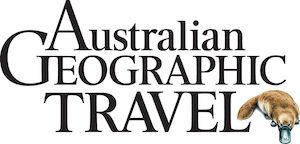Itinerary
Tour day-by-day
-

Day 1: Melbourne to Bendigo via Mount Korong Conservation Reserve
Picks ups will commence from your individual Melbourne hotel from 8.00am. Please advise us which hotel you are staying at so we can arrange your pick up. Alternatively, why not let our friendly team help to recommend a hotel for you to stay in Melbourne.
We head north from Melbourne city passing over the tail end of the Great Dividing Range and continue to Mt Korong scenic reserve. Ancient granite hills rise above the surrounding plains providing remarkable scenery.
The reserve and surrounding covenanted properties protect important woodland bird habitat that supports raptors like wedge-tailed eagle, peregrine and brown falcons as well as white-browed babbler, Gilbert’s whistler, rainbow bee-eater, Southern whiteface and diamond firetail. We occasionally see painted honeyeater, red-backed kingfisher and white-backed swallow. Along with woodland birds the reserve also provides opportunity for seeing kangaroos, wallabies, echidna and reptiles like shingleback lizard, marbled gecko and Jacky dragon.
After a picnic lunch we may visit other nearby reserves like Kooyoora State Park or Inglewood Conservation Reserve. Later in the afternoon we check into our accommodation in the regional city of Bendigo, where we stay for two nights. This former gold rush boom town has many Victorian era heritage listed buildings and city parks attract many birds.
Accommodation: Best Western Cathedral Inn, Bendigo
Lunch and dinner provided.
Conservation Component on this Tour
Guides carry a spotting scope and a small library of field guides. All guests will be provided with species checklists, which guides assist with and also complete online checklists of birds seen. Other significant species are also recorded and submitted to the appropriate online atlasses. These wildlife surveys are very important ‘Citizen Science’ contributions and play a significant role in assisting scientists and others to understand the major changes that are occurring in the world and help steer conservation efforts.
-

Day 2: Greater Bendigo National Park
Today we explore parts of the vast Greater Bendigo National Park like the bird-rich Kamarooka and Whipstick sections. These areas protect large stands of heathland, grey box and Mallee eucalyptus woodland. It’s a crossover point for northern and southern honeyeaters attracted to the flowering trees. Local water holes attract numerous species as the day warms up.
In the afternoon we visit the Bendigo sewage works with its conservation ponds and red gum woodlands along the Bendigo creek. This is a great area for waterfowl, raptors and forest birds including red-capped robin, shy heathwren, brush bronzewing, peaceful dove, white-fronted, fuscous, yellow-tufted, tawny-crowned and purple-gaped honeyeater, brown treecreeper. In the evening we may be lucky to see grey-headed flying foxes in some of the leafy parks in the city centre.
Accommodation: Best Western Cathedral Inn, Bendigo
Breakfast, lunch and dinner provided
-

Day 3: Bendigo to Ouyen via Mt Terrick NP, Kerang Lakes and Lake Tyrell
This morning we head north to Mt Terrick National Park, where granite outcrops are surrounded by dry woodland, including one of Victoria’s largest remaining stands of White Cypress Pine. The area is great for arid bird species as well as providing panoramic views over the surrounding Northern Grassland plains of the Riverina region.
After this we continue across the Riverina plains to the Kerang Lakes. Depending on water levels and bird species present we will visit some of the permanent and ephemeral lakes in the area. Some contain large ibis rookeries and others sometimes have good numbers of waders, waterfowl and terns.
Later we visit one of Australia’s largest salt lakes, Lake Tyrrell. This is a vast salt-crusted shallow depression, intermittently with a thin layer of water (after good rains). Great place for a leg stretch and a few photos and the shrublands in the south provide good habitat for rufous fieldwren, black-faced woodswallow and white-winged fairy-wren.
In the late afternoon we arrive at our accommodation in the small Mallee town of Ouyen.
Accommodation: Hilltop Motel, Ouyen
Breakfast, lunch and dinner provided.
-

Day 4: Hattah Kulkyne National Park
Continuing deeper into Mallee country we enjoy a full day in Hattah Kulkyne National Park with its Mallee and Cypress pine woodlands, saltbush scrub and ephemeral lakes system. The semi-permanent lakes here are Ramsar-listed Wetlands of International Importance and sustain large water bird populations in good years as well as many parrots and raptors, including white-bellied sea-eagle and little eagle.
Large red gum and black box trees provide nesting hollows for many parrots and we may see regent parrot, mallee ringneck, yellow rosella, bluebonnet, crested bellbird and peaceful dove and the picnic grounds are a great place to look for comical flocks of apostlebirds.
We spend time looking for some of the shier species living in the Mallee-spinifex woodlands in the western part of the reserve. Mallee eucalyptus with an understory of spinifex grass is the ideal habitat for the elusive Mallee emu-wren, striated grasswren, shy heathwren and chestnut quail-thrush.
Emus are regularly seen and we also keep an eye out for western grey kangaroos and reptiles like lace and sand goannas, shinglebacks and bearded dragons.
Accommodation: Hilltop Motel, Ouyen
Breakfast, lunch and dinner provided.
-

Day 5: Ouyen to Lake Mungo via Private Conservation Reserve (Malleefowl)
We spend the morning with a local guide on a private property that protects malleefowl habitat. The 6000-acre property contains a mix of established mallee woodland, newly re-vegetated areas and open areas. Several malleefowl mounds are present and we hope to see these incredible mound-builders, as well as desert parrots and honeyeaters from carefully placed hides and at waterpoints. Listed as vulnerable, and covering a fraction of their former range, malleefowl conservation relies on the combined efforts of regional recovery teams, government and private landowners to control predators and protect remaining habitat from fires and land clearing.
After a picnic lunch we cross the Murray river before continuing to Mungo Lodge. Enroute we enter the vast – 2,400sq.km – Willandra Lakes World Heritage Area (WHA) and walk along an ancient ‘fossilised’ watercourse that gave its name to this gigantic lake system. This is the Willandra Creek that, like the entire system, has been dry for 18,000 years. After checking in at the lodge we enter Lake Mungo National Park and watch the sunset over the dry bed of Lake Mungo, a magical experience. We often have our first sightings of red kangaroos and some of the desert parrots, like mulga parrot and mallee ringneck.
Accommodation: Mungo Lodge (three nights)
Breakfast, lunch and dinner provided.
-

Day 6 and 7: Lake Mungo National Park
We have two full days to explore this famous national park, with its rich cultural history and varied ecosystems. Now dry, Lake Mungo has been a living place for Aboriginal people for at least 50,000 years. The dunes beside the lake have eroded to expose the oldest human living site on earth which is the main reason for the creation of the World Heritage Area. Another reason for WHA status is a unique layer of exposed megafauna skeletal remains that tell of a cooler, wetter time in Australia when giant marsupials and Aboriginal people coexisted beside a magnificent freshwater lake system.
We travel through a diverse array of habitats varying from dense mallee woodlands, cypress pine/buloke woodlands, mulga scrub and vast expanses of saltbush. Huge white sand dunes rise high above the dry lake beds and have been eroded in some areas allowing burrowing birds like the white-backed swallow to build their nests. We take our time to explore the fauna and flora of the different habitats and also to uncover some of the cultural heritage of this important area.
Over these two days we expect to see many western grey and red kangaroos. On the bird front, among many others we will be looking for emu, pink cockatoo, mulga parrot, bluebonnet, chestnut-crowned babbler, crested bellbird, splendid, white-winged & purple-backed fairywren, chestnut quail-thrush, black-faced, masked & white-browed woodswallow, white-backed swallow, orange chat, zebra finch. Reptiles we may encounter are sand monitor, bearded, painted & mallee dragon, shingleback and Bynoe’s gecko.
Accommodation: Mungo Lodge
Breakfast, lunch and dinner provided.
-

Day 8: Mungo to Mildura Airport
After an optional early morning birding walk we have breakfast before making our way back to Wentworth. We visit the confluence of the iconic Murray and Darling rivers. Over the water and along the banks we keep an eye out for Caspian tern, Australasian darter, white-bellied sea-eagle, whistling kite, yellow rosella and blue-faced honeyeater. The journey ends around midday at Mildura airport (onward flight not included) or your Mildura hotel (not included) for those staying on. Why not stay longer and have some time to explore, ask our friendly team for suggestions.
Breakfast provided.
Terms & Conditions
*Price per person, quoted in AUD, based on double occupancy. $6,589 for Single. Price includes 7 nights accommodation as per itinerary, experienced wildlife guide(s) throughout days 1–8, sightseeing as per itinerary by private, air-conditioned charter vehicle, meals included: daily breakfast, 7 x lunches, 7 x dinners.Why Australian Geographic Travel?
For nearly 40 years, our adventurers, photographers, writers and filmmakers have travelled Australia, bringing to life the stories of our country. Australian Geographic Travel grew from this legacy and invites you to enjoy the special places we've uncovered and meet the wonderful Australians who are inextricably part of them.

Unique Itineraries & Access
Australian Geographic Travel offers a range of unique itineraries carefully crafted by our travel specialists. Our small group tours specialise in hard-to-reach places. By travelling with us you'll have access to private land or reserves for wildlife and nature viewing that is usually inaccessible to the public.
Explore with Experts
Incorporated in our trips are highly engaging nature and wildlife experiences that support local conservation efforts, including ethical wildlife encounters, multi-day nature walks, hands-on conservation activities and more.
Meet Like Minded People
You'll join similarly inclined souls who share your taste for exploration and a burning desire to learn more about our phenomenal natural world. By travelling in small groups, you'll enjoy opportunities to make new friends – bond around a campfire, an incredible bird-spotting experience, an epic hike or a breathtaking vista. It's the shared stories that bring people together and create unforgettable memories.
Give Back
100% of the profits of Australian Geographic Travel are donated to the Australian Geographic Society and used to support scientific and environmental research, conservation, community projects and Australian exploration and adventure.

 We have developed this exclusive group itinerary with our Australian travel specialist, Australian Geographic Travel. To book this trip or for more information about additional departure options, please fill out the enquiry form. This will be forwarded to one of their expert consultants who will contact you as soon as possible.
We have developed this exclusive group itinerary with our Australian travel specialist, Australian Geographic Travel. To book this trip or for more information about additional departure options, please fill out the enquiry form. This will be forwarded to one of their expert consultants who will contact you as soon as possible. 







